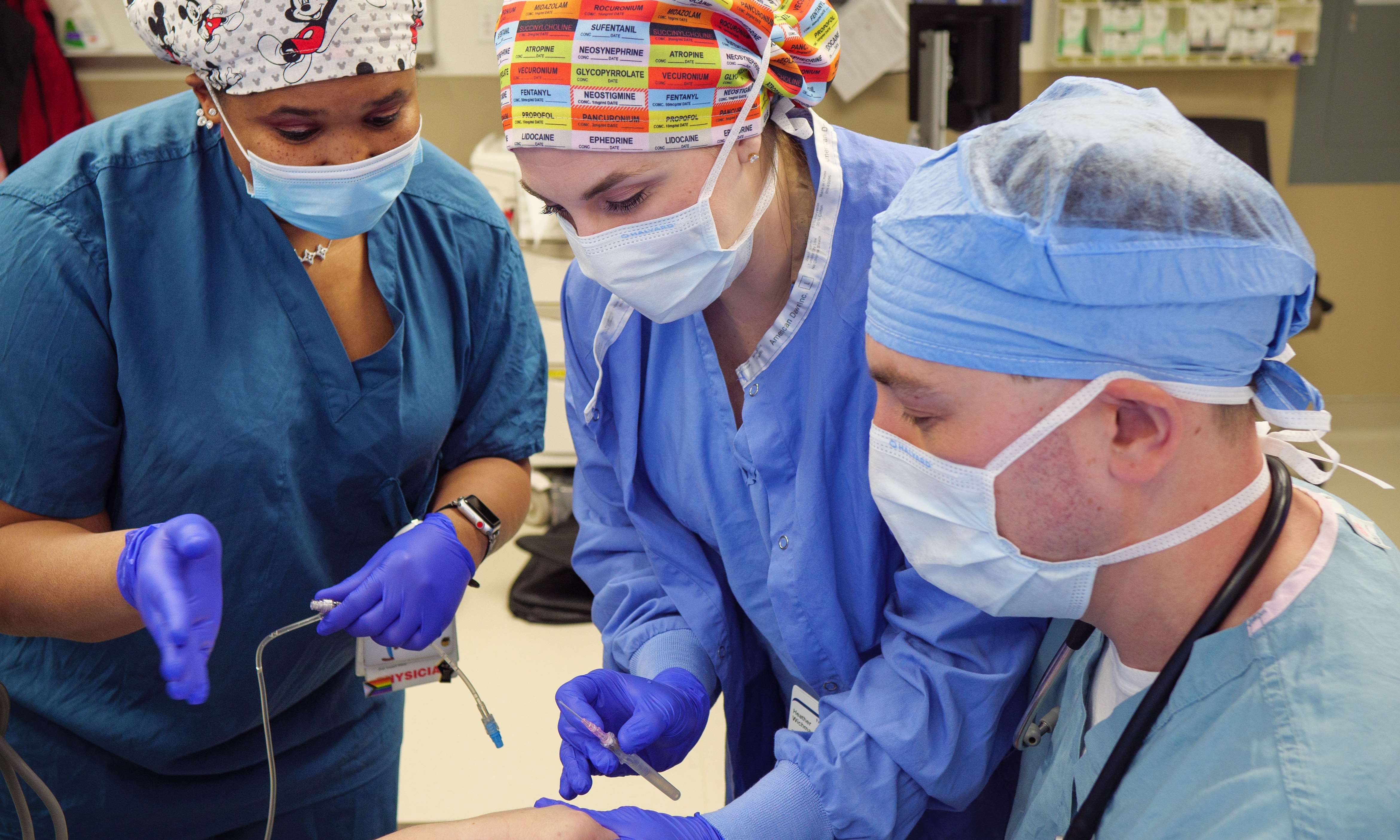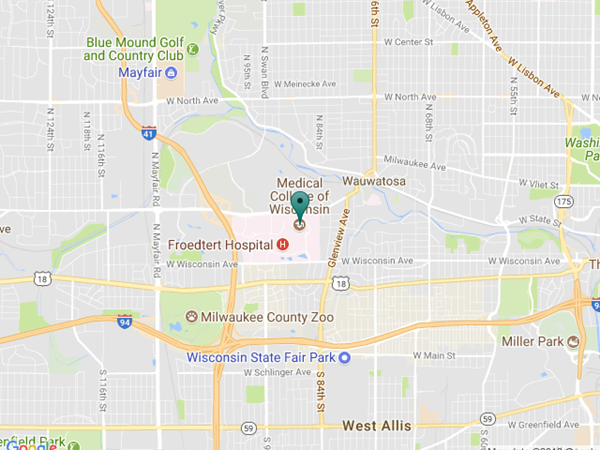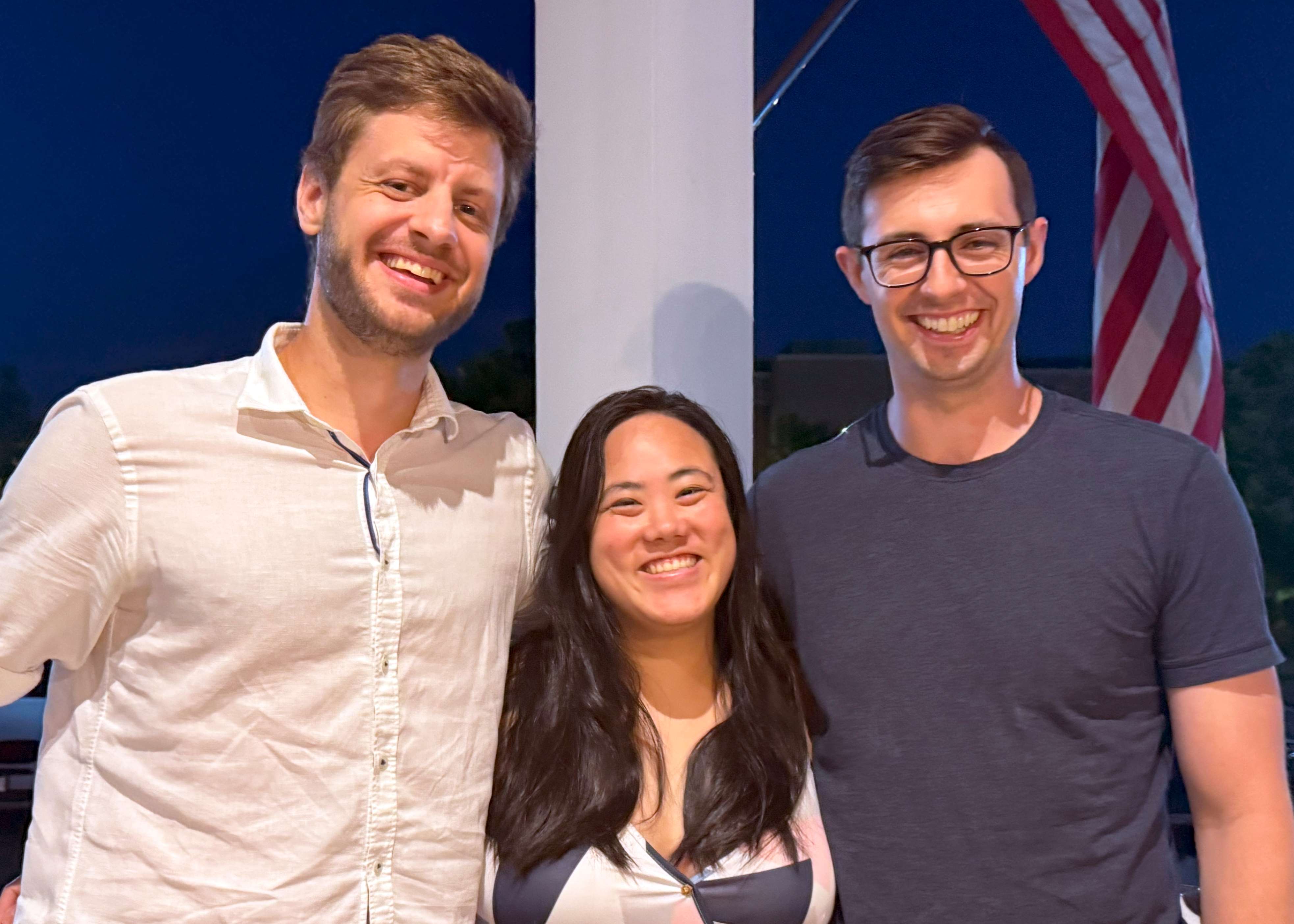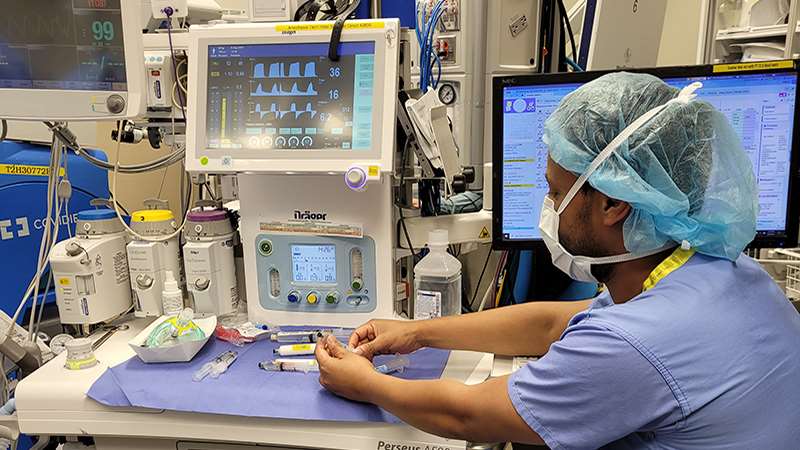Medical College of Wisconsin Anesthesiology Residency

Welcome from the Chiefs
Read a brief introduction to our training program from the 2025-2026 Chief Residents - Dr. Boran Katunaric, Dr. Justine Huang, and Dr. Ryan Suddarth.
Mission & Vision
-
Program Information
Didactics, yearly overview, rotation descriptions, and more
Learn more -
Goals and Objectives
What you'll learn during your training at MCW
Learn more -
Applying
The first step to becoming part of our Anesthesiology family
Learn more -
Current Resident Roster
Meet our current trainees
View
-
Benefits, Conditions, and Terms of Employment
The Medical College of Wisconsin Affiliated Hospitals offers its housestaff a comprehensive benefits package
Learn more -
Housestaff Life
Housing information and additional resources
Learn more -
Visa Information
Details about visa requirements and other visa-related resources
Learn more -
MCW Graduate Medical Education
Information and resources important to all MCW housestaff
Learn more
Combined Residency Programs
-
Combined Pediatrics and Anesthesiology
Learn More -
Physician Scientist Development Program
Learn More
Average case logs
| Average MCW Resident (2024 graduate averages) |
ACGME Minimum |
|
| Patients 3yr - 12 yr | 120 | 100 |
| Patients 3 months - 3 years | 61 | 20 |
| Patients younger than 3 mos. | 13 | 5 |
| Vaginal delivery | 64 | 40 |
| C-Section | 38 | 20 |
| Spinal | 60 | 40 |
| Epidural | 80 | 40 |
| Intracerebral open |
44 | 10 |
| Intrathoracic non-cardiac |
34 |
20 |
| Major vascular | 39 | 20 |
| Cardiac | 46 | 20 |
| Peripheral Nerve Block | 141 | 20 |
| Pain evaluation — new patient |
51 |
20 |
| Pain procedures | 75 | N/A |
Unique benefits
Educational support
Residents receive $2,000 ($500 from the Department and $1,500 from Medical College of Wisconsin Affiliated Hospitals, included in the stipend) per year for educational purposes. The Department funds are for license fees, dues, PDA, etc. The Department provides additional funds of up to $1,500 per year to cover registration, travel, lodging, and meals to residents presenting at meetings and conferences.
Residents
also have access to the STAR Center, a state-of-the-art
simulation center; a vast collection of medical information (e-textbooks,
PubMed with many journal subscriptions, UptoDate, etc) via MCW Libraries; and Anesthesia
Toolbox, New Innovations and D2L accounts that provide additional learning
opportunities such as lectures, quizzes, keyword reviews, and practice
management guidelines. For In-Training Exam and American Board of
Anesthesiology exam preparation, the Department funds residents’ subscriptions
to TrueLearn question banks each year.
Our Department is also proud to include an educational specialist, Jessica De
Santis, PhD, as part of our faculty and residency leadership team. She provides
educational expertise and study plan/test preparation support for our residents
throughout residency, as well as providing significant contributions to faculty
development, Diversity Equity & Inclusion initiatives, community outreach,
and professional development.
Research opportunities
For those who are interested in extensive clinical and research training, we are one of only 16 Anesthesiology residency programs in the U.S. to hold a NIH/NIGMS T32 funding mechanism to support mentored-research during clinical training. In addition to the NIH T32, in collaboration with the Departments of Medicine, Surgery, and Pediatrics, we offer appointments on a NIH/NHLBI R38 grant to allow for career development as a clinician-investigator.
The STAT Program (Specialized Training in
Anesthesiology Team Science) is an extensive program for those with a strong
research background. Briefly, it is a 4-year track of clinical anesthesiology
training followed by a year as a faculty instructor with protected research
time. During the four years of residency training, the resident receives a
total of 11 blocks of research time, the maximum allowable per the ABA.
Following residency, the resident is hired as a faculty instructor with 80 percent protected research time. For trainees with limited research experience and have
research interests that align with the priorities of the NHLBI, a R38
appointment is possible, which allows for up to 18 months of protected time. Interested
applicants should apply to MCW’s Categorical Research Track (NRMP Program code
1784040C2).

Other
opportunities also exist for residents to participate in scholarly activities
which may include contributing to case reports or retrospective reviews. These
endeavors can occur during the intern year or during the three years of
residency training. Other scholarly opportunities include significant support
of resident attendance at national conferences and the opportunity to take a 2-week
research elective to work on smaller research projects. The Department provides
up to $1,500 per year (2024) in addition to other educational funds to reimburse
travel and registration costs for a resident who is presenting at a national
meeting. Additionally, all residents are given the opportunity to attend
the Midwest Anesthesia Residents Conference, at which many of our
residents win awards. Our Department funds attendance of this meeting separate
from other education funds, and MCW’s residents and medical students have
historically had excellent representation at this meeting.
Moonlighting
Our residents can internally moonlight in Obstetric Anesthesia at the Froedtert Birth Center or in the Cardiovascular ICU (CVICU) at Froedtert, as long as they have successfully completed the respective rotation previously, meet academic performance criteria including ITE score > 50th percentile (CA1) or > 20th percentile (CA2-3), and meet the administrative requirements for moonlighting below.
All residents who meet the administrative requirements below (regardless of academic performance) are eligible for After-5 Pay when working after 5 p.m. and not on call in the Froedtert ORs.
To receive moonlighting pay, administrative requirements dictate that residents must have their full unrestricted Wisconsin medical license, and moonlighting cannot cause a work-hour violation under the ACGME guidelines. Residents in Anesthesiology have opportunities to sign up for FBC & CVICU shifts each block and are paid by Medical College of Wisconsin Affiliated Hospitals for these shifts. External moonlighting and moonlighting by housestaff on a J-1 Exchange Visitor Visa are not permitted. Housestaff on an H-1B Temporary Professional Workers visa are permitted to participate in internal moonlighting.

MCW Anesthesiology
The Department of Anesthesiology strives to provide exemplary patient care, advance standards through development of innovative applications of processes and technology, and pursue research that defines novel therapies in a dynamic academic environment
Learn about MCW Anesthesiology
Education
Educating and developing the next generation of physicians and scientists
Learn about our education programs
Research
Discovering and translating new knowledge in the biomedical sciences
Learn about our research
Fellowships
Offering advanced training in seven anesthesiology subspecialties
Learn about our fellowships
Patient Care
Providing cutting-edge, interdisciplinary and compassionate care of the highest quality
learn about our patient careContact Us
Education Division
Department of Anesthesiology
Medical College of Wisconsin
9200 W. Wisconsin Ave., Milwaukee, WI 53226
General phone: (414) 805-7455
General email: anesth@mcw.edu
Training verifications - click here
Ahleya Hayward (Education Division)
ahayward@mcw.edu
Nathan Karst (Medical Student Education, Internship, Combined Residencies)
nkarst@mcw.edu
Amy Kjaer (Residency)
akjaer@mcw.edu
Sarah Pritchard (Fellowship - Adult Cardiothoracic, Critical Care, Pain, RAAPM)
spritchard@mcw.edu
Rachel Smith (Fellowship - Pediatric)
rasmith@mcw.edu
Erin Walcheske (Education Division, OB Fellowship)
ewalcheske@mcw.edu
Laura González, MD
Program Director
Associate Professor
Anne Castro, MD
Associate Program Director
Assistant Professor
Maria Muravyeva, MD, PhD
Associate Program Director
Assistant Professor
Chelsea Willie, MD
Associate Program Director
Associate Professor
Amber Zdanovec, MD
Associate Program Director
Assistant Professor
M. Tracy Zundel, MD
Associate Program Director
Associate Professor




